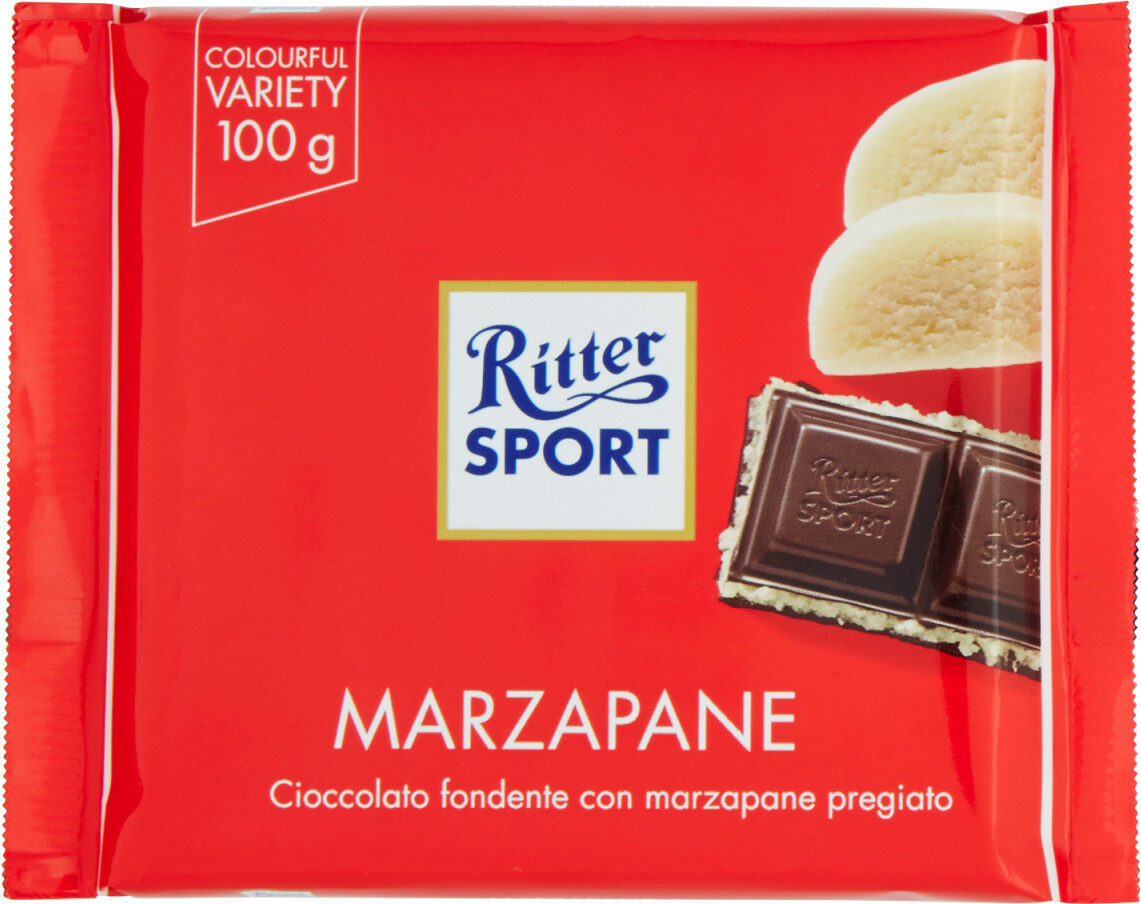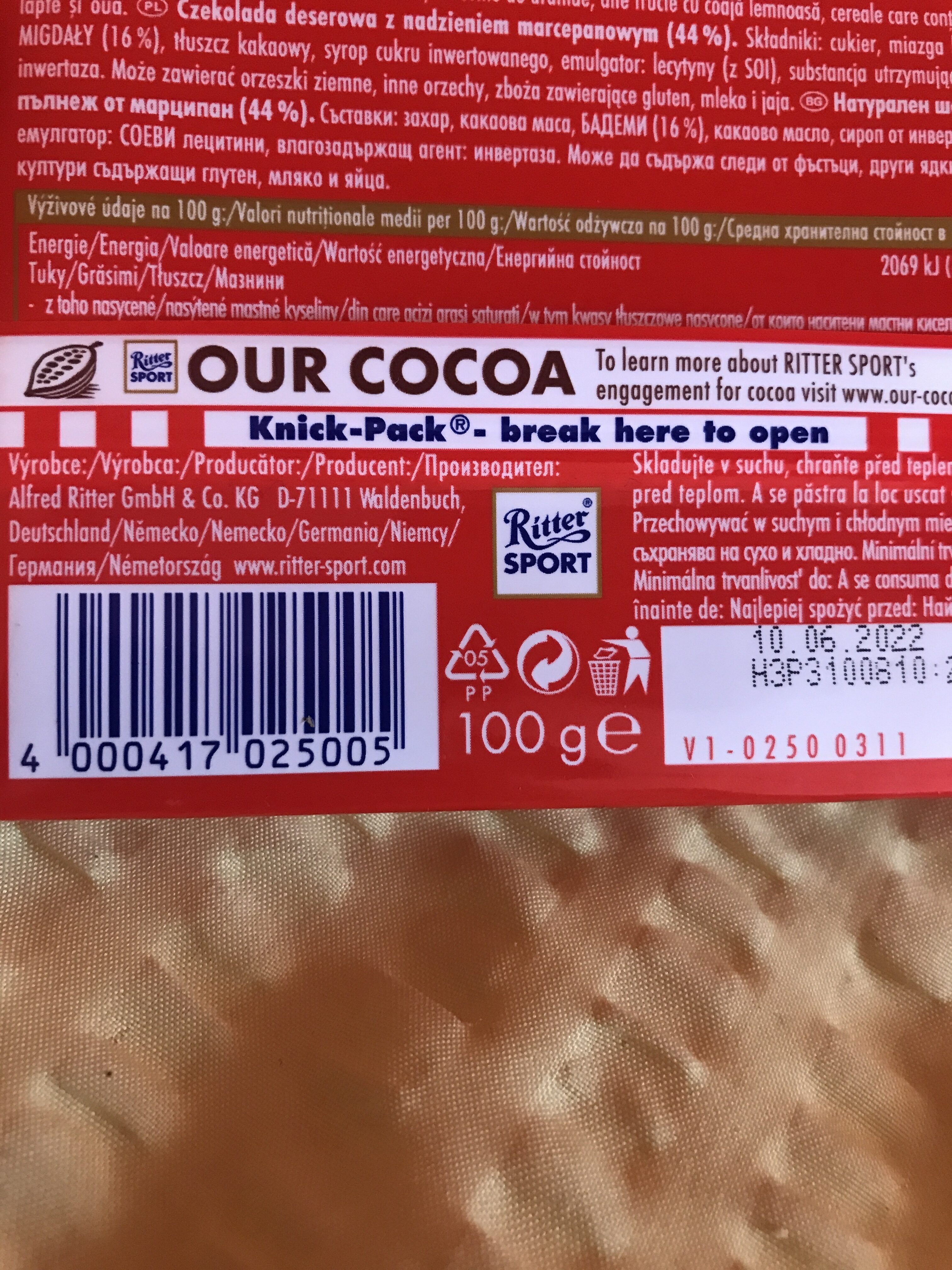Schokolade Marzipan - Ritter Sport - 100g
This product page is not complete. You can help to complete it by editing it and adding more data from the photos we have, or by taking more photos using the app for Android or iPhone/iPad. Thank you!
×
Código de barras: 4000417025005 (EAN / EAN-13)
Common name: Dark chocolate with marzipan filling
Cantidade: 100g
Empaquetado:
en:Plastic, PP, en:Green dot, en:Mixed plastic-packet
Marcas: Ritter Sport
Categorías: en:Plant-based foods and beverages, en:Plant-based foods, en:Snacks, en:Sweet snacks, en:Cocoa and its products, en:Chocolates, en:Dark chocolates, en:Filled chocolates, en:Chocolates stuffed with almond paste, en:Filled dark chocolates
Etiquetas, certificacións, premios:
en:Vegetarian, Vegano, en:Green Dot, en:Rainforest Alliance

Lugares de fabricación ou procesamento: Deutschland
Link to the product page on the official site of the producer: http://www.ritter-sport.de/en/products/d...
Tendas: Lidl, Irma.dk, Delhaize, REWE, Eurospar, Спар, Пятёрочка, Перекресток, Магнит, Визит, Сам Самыч, Willy's, Соседи, Netto, Σκλαβενίτης
Country: Francia, Grecia, en:Allemagne, en:Belgique, en:Biélorussie, en:Bulgarie, en:Danemark, en:Espagne, en:Pologne, en:Roumanie, en:Royaume-Uni, en:Russie, en:République tchèque, en:Slovaquie, en:Suède
Matching with your preferences
Report a problem
Data sources
Product added on by stephane
Last edit of product page on by planteuser.
Páxina do produto tamén editada por alex-ustas, aquilax, arc2, blazern, bleakpatch, countrybot, date-limite-app, ecoscore-impact-estimator, emiljunker, foodrepo, foodvisor, hale, humenike, inf, javichu, kakao, kiliweb, m123, magerharz, mathias, maylord, moon-rabbit, musarana, openfoodfacts-contributors, packbot, prepperapp, quechoisir, quentinbrd, risajanda, sebleouf, sil, spotter, swipe-studio, tacite, tacite-mass-editor, teolemon, thaialagata, twoflower, yuka.Uy9zZ0FmODlwLzhEcGRndndDSHo4L1owNVlXN1VIeTNPODhKSVE9PQ, yuka.ZmJzUVM0QTZxNkl3eE5vVDFTM0V5dGg0d3JXMmZHZUpLZll1SVE9PQ, yuka.sY2b0xO6T85zoF3NwEKvlmhub-rvoheZFj3UhUvQ_MzfDr-4TcNAspbiY6s.













